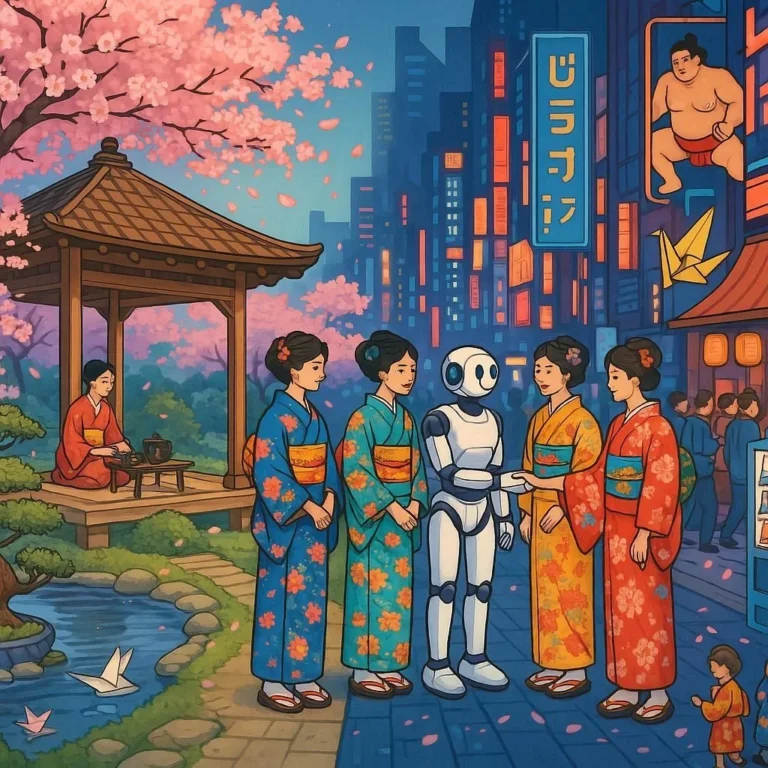506 views The Cultural Roots of the Yakuza: From Samurai to Organized Crime
The Yakuza, Japan’s most infamous organized crime syndicate, has a history that stretches back centuries, deeply rooted in the cultural and historical fabric of the nation. While modern perceptions of the Yakuza often focus on their criminal activities, their origins are far more nuanced, tied to the honor codes and traditions of Japan’s samurai class. In this blog post, we will explore the cultural roots of the Yakuza, tracing their evolution from their samurai origins to their modern-day status as a powerful organized crime syndicate.
The Samurai Legacy: Honor and Loyalty
The Yakuza’s roots can be traced back to the Edo period (1603-1868), when Japan was ruled by the Tokugawa shogunate. During this time, the samurai class, who were warriors bound by a strict code of honor known as bushido, held significant power and influence. Bushido emphasized loyalty, courage, and justice, and it was these principles that would later shape the Yakuza’s code of conduct.
However, as the Edo period progressed, many samurai found themselves without a master (known as ronin) due to the paci cation of the country and the development of a more centralized government. Without a steady income or purpose, some ronin turned to gambling, extortion, and other illicit activities to survive. These individuals would eventually form the foundation of the Yakuza.
The Birth of the Yakuza
The term ‘Yakuza’ is derived from the Japanese card game ‘Oichokabu,’ where the worst possible hand is called ‘ya-ku-za,’ meaning ‘8-9-3.’ This term was initially used to describe the outcasts and mis ts of society who were considered worthless, much like the losing hand in the game. Over time, the term came to be associated with the criminal organizations that emerged in Japan during the 17th century.
The Yakuza’s early activities were centered around gambling, prostitution, and extortion. They operated in the shadows, but their presence was tolerated by the authorities as long as they maintained a certain level of order within their territories. This tacit acceptance allowed the Yakuza to grow in power and in uence, eventually becoming a major player in Japan’s criminal underworld.
The Meiji Era and the Modernization of the Yakuza
The Meiji Restoration of 1868 marked a significant turning point in Japanese history, as the country underwent rapid modernization and opened up to the rest of the world. The old feudal system was abolished, and the samurai class was disbanded, leaving many former warriors without a role in society. This social upheaval created an environment in which the Yakuza could further expand their operations.
During the Meiji era, the Yakuza began to adopt more structured organizational practices, modeled after the traditional hierarchies of the samurai. They established a strict chain of command, with leaders at the top and lower-ranking members below them. This hierarchical structure, combined with their adherence to a code of honor, allowed the Yakuza to maintain a level of discipline and unity that set them apart from other criminal organizations.
The Yakuza’s Organization and Rituals
The Yakuza’s organizational structure is one of the most fascinating aspects of their culture. At the top of the hierarchy is the ‘oyabun’ (father figure), who serves as the leader of the organization. Below the oyabun are the ‘wakagashira’ (young heads), who manage the day-to-day operations of the group. The lower ranks consist of ‘shateigashira’ (Montserrat executives) and ‘kumi-chou’ (group leaders), who oversee smaller units within the organization. At the bottom are the ‘ kobun’ (child soldiers), who carry out the majority of the Yakuza’s activities.
One of the most distinctive aspects of the Yakuza is their use of tattoos. These elaborate tattoos, known as ‘Irezumi,’ are often full-body designs that depict scenes from Japanese mythology, nature, and history. The tattoos serve as a symbol of the Yakuza member’s commitment to their organization and their willingness to endure suffering. The process of getting these tattoos is painful and time-consuming, often taking years to complete.
Another important ritual within the Yakuza is the ‘sakazuki’ ceremony, which involves the exchange of sake cups as a symbol of loyalty and friendship between members. This ceremony is often performed during important events, such as the induction of new members or the resolution of conflicts within the organization.
The Yakuza’s Cultural Significance
Despite their involvement in criminal activities, the Yakuza has a peculiar place in Japanese culture. They are often portrayed in films, literature, and television dramas as honorable outlaws, adhering to their own code of conduct even as they exist outside the bounds of societal norms.
In some parts of Japanese society, the Yakuza are seen as protectors of the weak and defenders of justice, particularly in cases where the authorities are unable or unwilling to act. This perception is reinforced by the Yakuza’s adherence to a code of honor that emphasizes loyalty and fairness, even if their methods are often violent and extralegal.
Conclusion
The Yakuza’s cultural roots are deeply intertwined with Japan’s history, tracing back to the samurai class and their adherence to the principles of bushido. While their activities are often associated with crime and violence, their organizational structure, rituals, and code of honor set them apart from other criminal organizations. As Japan continues to evolve in the modern era, the Yakuza remains a fascinating and complex phenomenon, embodying both the societal norms of the past and the challenges of the present.
By understanding the cultural roots of the Yakuza, we can gain a deeper insight into the historical and social forces that have shaped Japan’s criminal underworld. The Yakuza’s story is one of honor, loyalty, and the persistence of traditional values in a rapidly changing world.





